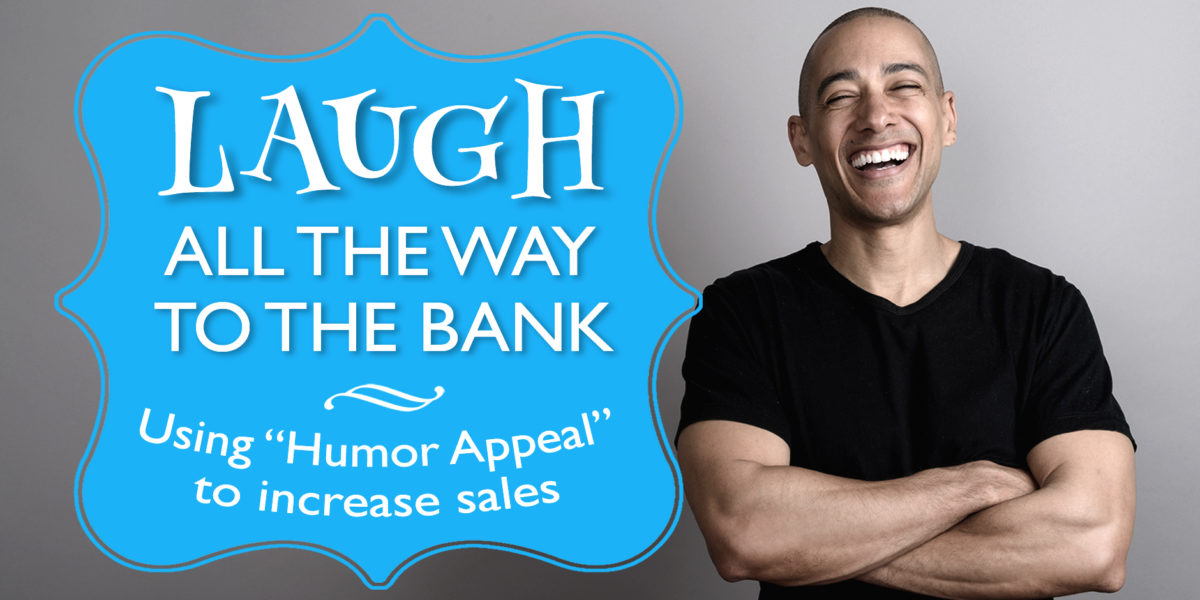Stop reading if you know this joke….
A man goes to the doctor with a carrot in his nose, cabbage in his ears and ham over his eyes. “What’s wrong with me doc?” He asks. The doctor replies “Well, it looks like you’re not eating right.”
Did you stop reading? Of course not.
Even if you knew the joke, it’s worth reading because we like to smile. According to psychologist Paul Ekman, quoted in Yale Scientific Magazine, when we smile, the brain releases dopamine, a neurotransmitter that produces feelings of happiness.
Everyone likes to feel happy and humor creates happiness. According to Curtis Newbold, Associate Professor at Westminster College in Salt Lake City, funny ads use the Humor Appeal strategy, which persuades people to like a company, brand, product, service, or idea by making them laugh and feel good. If you you like the product or service, you are more likely to buy it.
Funny Doesn’t Always = Money
Humor in ads can also backfire. The award winning and very funny Alka Seltzer Spicy Meatball TV commercial from 1969 is a perfect example. (To see the spot, go toYouTube and search “spicy meatball commercial.”) The spot itself was parodied over and over but many people could not recall the product being advertised.
Baby Means Business
On the flip side, the very funny E*Trade talking baby commercials that debuted during in January 2008 during the Super Bowl helped the online trader to achieve explosive growth. The TV spot featured a talking baby in front of a web cam discussing investing and finance in an adult voice.
The spots made E*Trade a household name. (To see dozens of spots from the campaign, go toYouTube and search “E*Trade baby commercials.”) In 2013, the company had over 64 million total views and over 26,000 subscribers on YouTube, more than 108,000 Facebook Baby and Corporate pages fans, and more than 17,000 Twitter followers.
So what’s the difference between Alka Seltzer and E*Trade commercials? Why didn’t Alka Seltzer spots increase sales like E*Trade? Both spots are funny. But the reality is that funny ads that don’t have enough product mentions can make you overlook what the ad is selling. And if the content has no relevance to the product or service selection it unlikely to increase sales.
The E*Trade baby looked like a baby but talked like your financial advisor and brand and product benefits were plentiful. In one spot, his mother is looking for her car keys while he tells us: “Oh, this is lame… investors could lose tens of thousands of dollars in their 401k hidden fees — like a hidden fee in your giant mom bag…..maybe I have them — oh that’s right, I don’t because I rolled my account over to E*trade where they don’t have hidden fees.” To his mom: “Hey is that my gerbil? You said he moved to a tiny farm! That’s it I’m running away.”
Humor Is Just One Way To Appeal To Audience
Newbold says the Humor Appeal strategy is just one of roughly twenty ad strategies that marketing professionals use to persuade people to buy a product, pay for a service, donate to a cause, or otherwise be persuaded so you have at least 19 other choices besides humor.
If you decide it’s worth the risk to use humor in your next ad campaign, test quickly to make sure it’s increasing sales. You don’t want your boss to call you in and ask, “Is this some kind of joke?”













Comment